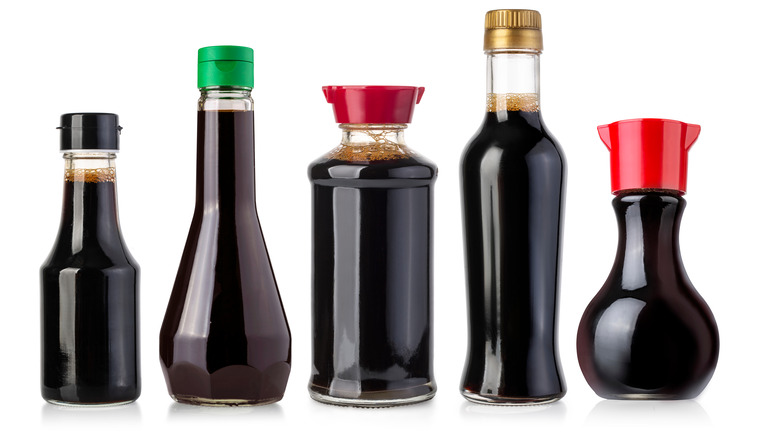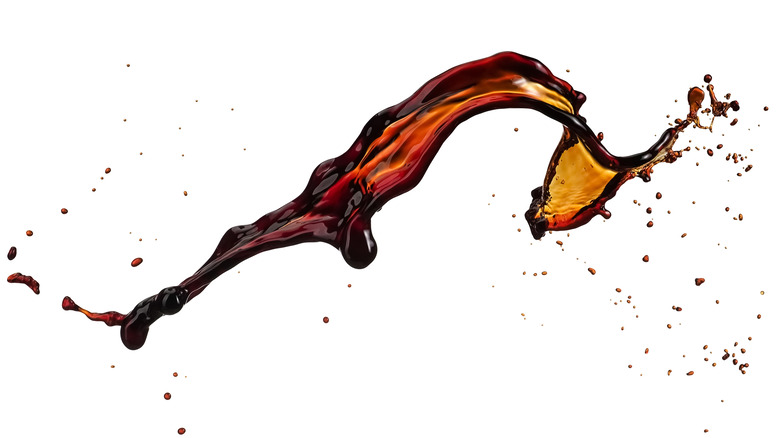Light Soy Sauce Vs. Dark Soy Sauce: What's The Difference?
If you've ever decided to take it upon yourself to cook a Chinese dish, you'll know that the pantry will require extensive outfitting before whipping out your wok (which can be used for a variety of tasks beyond stir-fry). The basic ingredients that make up a Chinese kitchen include rice vinegar, black rice vinegar, sichuan peppercorn, oyster sauce, sesame oil, shaoxing wine, cornstarch, garlic, shallots, and of course; soy sauce.
Whether you buy the classic small Kikkoman bottles from the grocery store or bigger bottles from a specialized Chinese grocery store (or simply save the mini packets from ordering takeout sushi), you may think all soy sauce is more or less the same. But in the reality of our large and diverse world, there are actually many varieties of soy sauce, and many Chinese recipes will call for two basic kinds: light and dark. These two kinds of soy sauce may look similar, but there are some characteristics that set them apart aside from their colors.
Light versus dark soy sauce
First things first: soy sauce, or jiàng yóu (酱油), is a liquid seasoning sauce made by a long process of brewing fermented soybeans and mold or cultures or yeast, per The Woks of Life. When a recipe simply calls for soy sauce, it's more than likely referring to light soy sauce, which is saltier and often found in Cantonese cooking.
Dark soy sauce, however, is noticeably thicker than it's light counterpart, as well as a bit sweeter. Though you may be tempted, dark soy sauce cannot be used as a perfect substitute for light, because of how different it is in taste. Per Kikkoman, when dark soy sauce is called for, it's purpose is usually more for aesthetic than for flavor, since it is used to add color to the dish and to coat meats. Both light and dark soy sauce are delicious when used in cooking — just remember to put them back in your pantry and not in the refrigerator when done.

